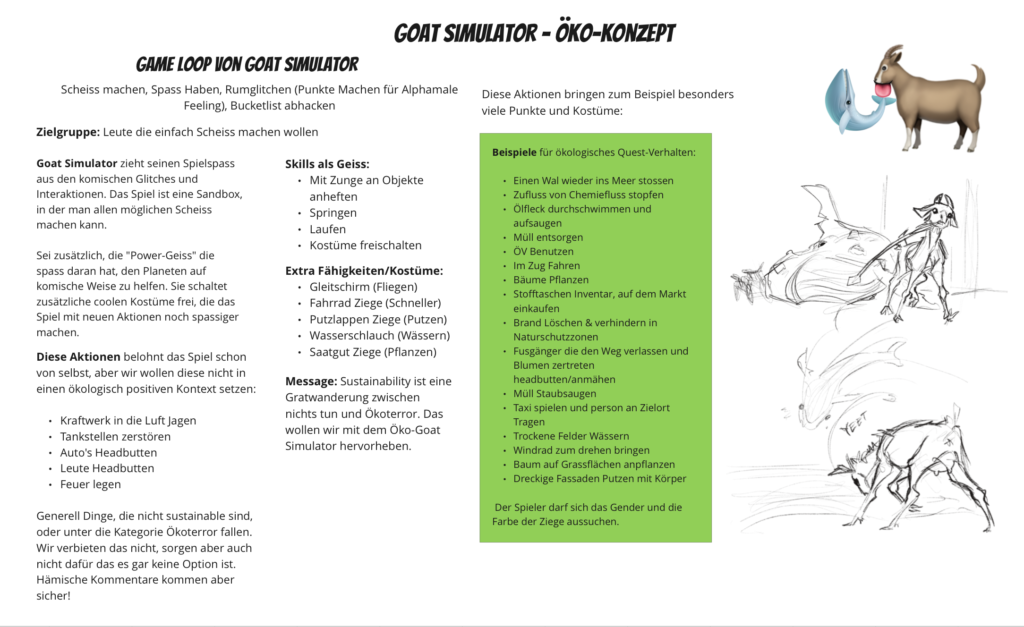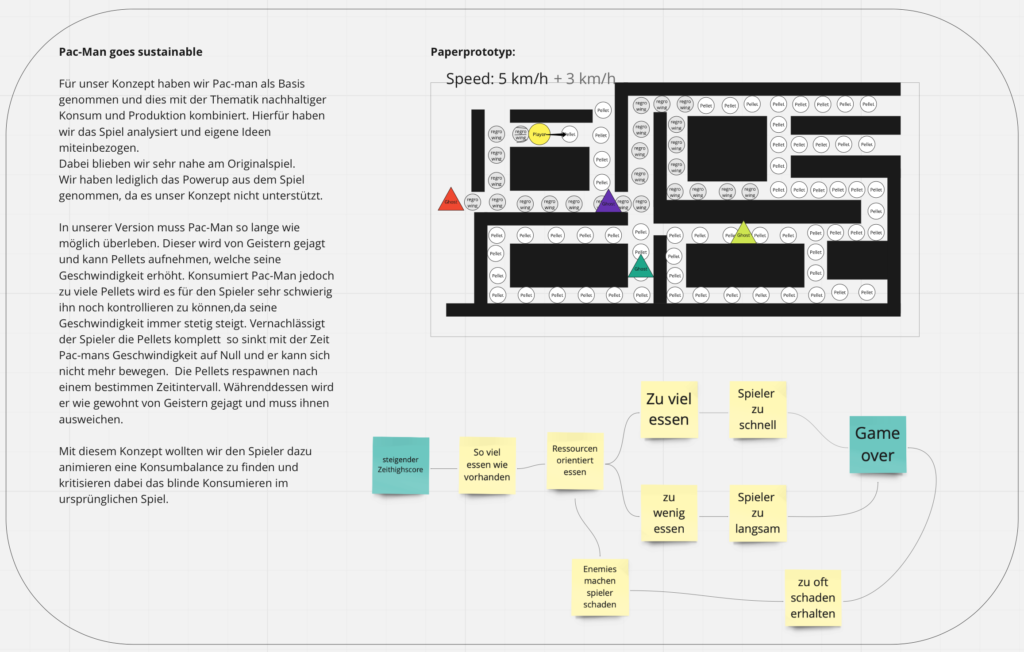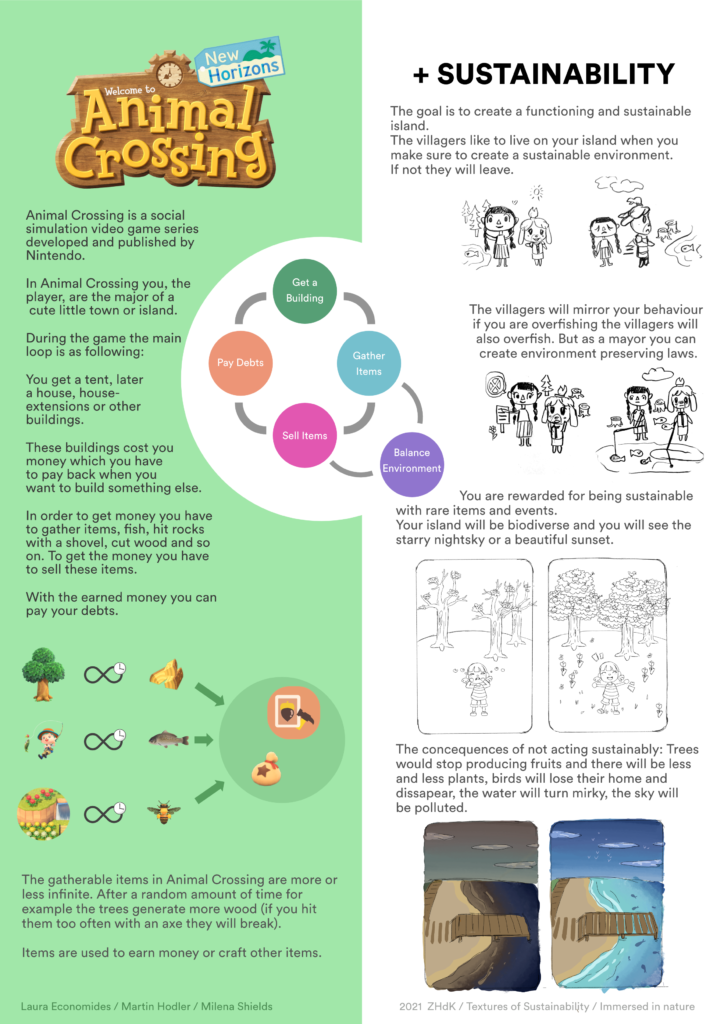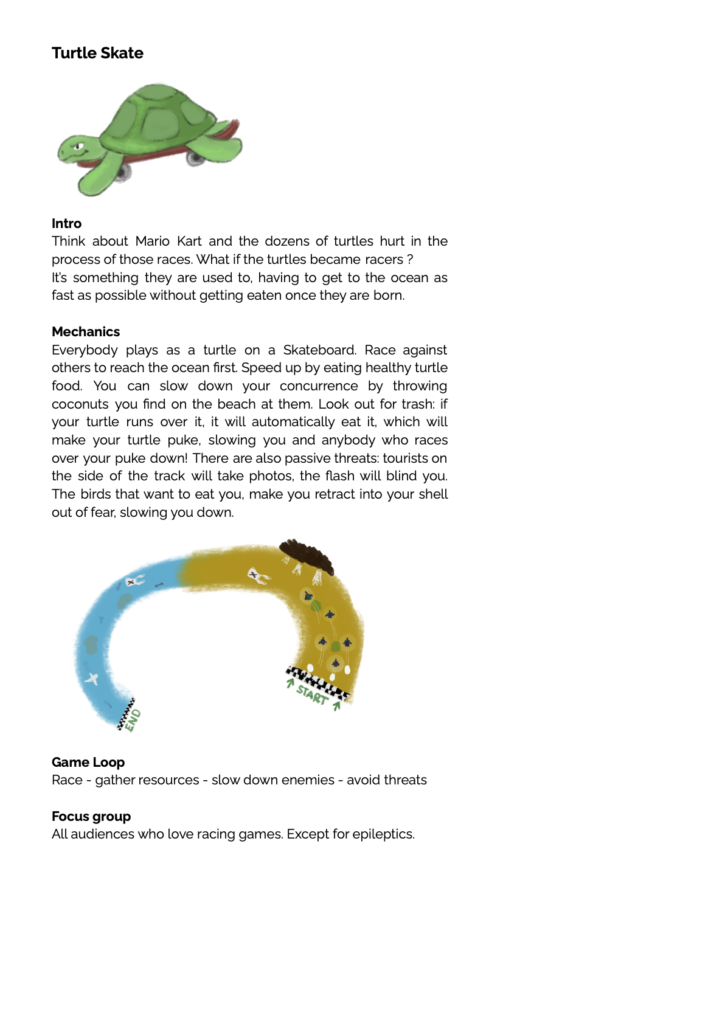Immersed in nature. On the power of environmental storytelling in games in times of climate emergency
Emma McMillin & Oliver Sahli
In this workshop, we will reflect on the western cultural perceptions of nature and how it permeates design, specifically game design. We will discuss the tools necessary to understand and challenge these representations in media to design in the manner of sustainability. We will give insights into our ongoing projects and also would like to talk about the difficulties we have encountered in the development process. The workshop’s goal is to produce your individual project proposal or brochure that addresses these themes, which we will share in a collective virtual exhibition.
We began the workshop with a series of questions asking participants how successful or unsuccessful humanities’ response to climate change is and if they believe games can make a difference. While the response was mostly negative toward humanities’ response, they were positive about games having the capacity to addressing sustainability.
This workshop defined what sustainability means and presented the 2015 United Nation’s guidelines for sustainable development. We discussed the sustainable iceberg model and how understanding and addressing the biases and beliefs in a system have more leverage in designing effective change. In designing games we inherently build in our own values into the system, which in tern are adopted by players when playing the game. We then gave examples of how western values of nature are present in games and what behaviors arise from these. We introduced green nudges as a tool for encouraging sustainable behavior and gave examples from our own work of the reality and difficulties that arise in integrating these nudges.
In the afternoon we took the theory into practice and had the participants divide into four groups and develop a paper prototype taking an existing game of their choice and incorporating a green nudge into it. We challenged them to think not only of the symbols of sustainability, but how the mechanics of the game might support them. The goal of the workshop is that they understand how we build our own values into the games, whether we’re aware or not, and that we should assess these values and if they support sustainable behavior.
We held the presentations over Zoom and then transitioned all of the workshop activities to Miro. In Figure 1. we all brainstormed examples of how games rate mechanically versus sustainably, which found a significant decrease in the effectiveness of mechanics versus sustainability. Figure 2 shows an example of how the groups decided on a game and the process for detailing theoriginal loop and what sustainable development goal could be applied to that loop.One of the main challenges for each group was deciding on how to balance symbolic representations of sustainability versus mechanical. The key question we asked participants is if the sustainable message would still function if the visuals were removed entirely. Relying on assumed behaviors can easily lead to an unexpected and undesirable outcome, so focusing on how the mechanics support the message plays a crucial role in the design. The next page will showcase the outcomes from each group.




